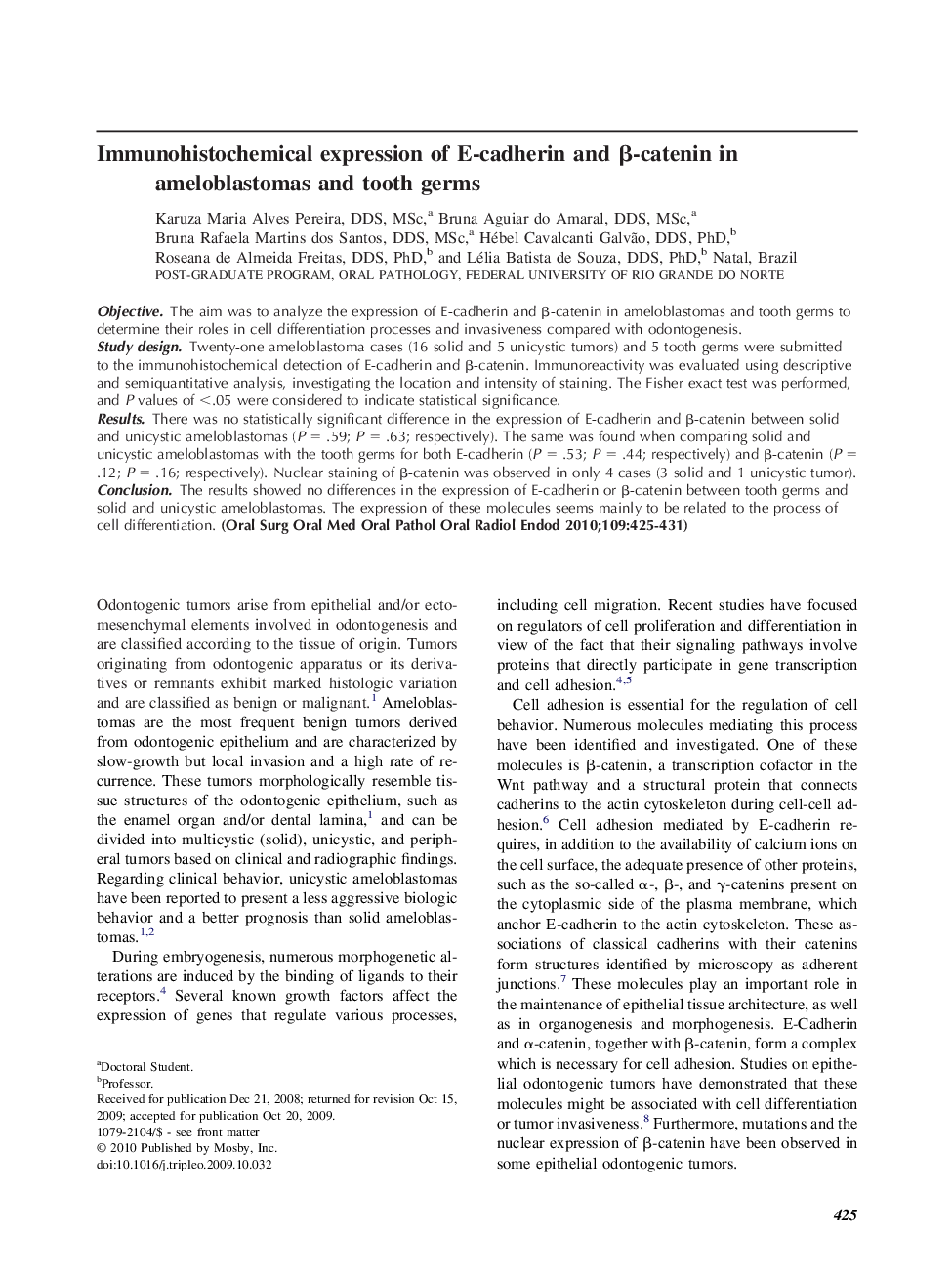| Article ID | Journal | Published Year | Pages | File Type |
|---|---|---|---|---|
| 3167692 | Oral Surgery, Oral Medicine, Oral Pathology, Oral Radiology, and Endodontology | 2010 | 7 Pages |
ObjectiveThe aim was to analyze the expression of E-cadherin and β-catenin in ameloblastomas and tooth germs to determine their roles in cell differentiation processes and invasiveness compared with odontogenesis.Study designTwenty-one ameloblastoma cases (16 solid and 5 unicystic tumors) and 5 tooth germs were submitted to the immunohistochemical detection of E-cadherin and β-catenin. Immunoreactivity was evaluated using descriptive and semiquantitative analysis, investigating the location and intensity of staining. The Fisher exact test was performed, and P values of <.05 were considered to indicate statistical significance.ResultsThere was no statistically significant difference in the expression of E-cadherin and β-catenin between solid and unicystic ameloblastomas (P = .59; P = .63; respectively). The same was found when comparing solid and unicystic ameloblastomas with the tooth germs for both E-cadherin (P = .53; P = .44; respectively) and β-catenin (P = .12; P = .16; respectively). Nuclear staining of β-catenin was observed in only 4 cases (3 solid and 1 unicystic tumor).ConclusionThe results showed no differences in the expression of E-cadherin or β-catenin between tooth germs and solid and unicystic ameloblastomas. The expression of these molecules seems mainly to be related to the process of cell differentiation.
